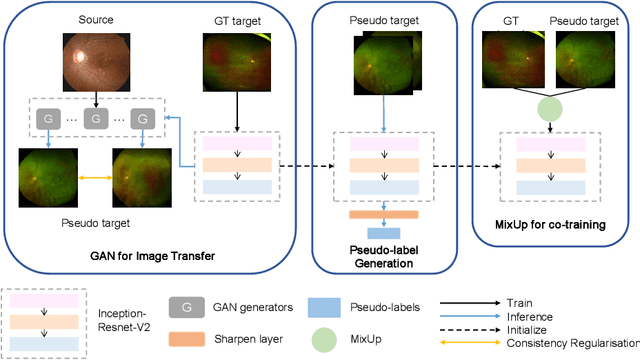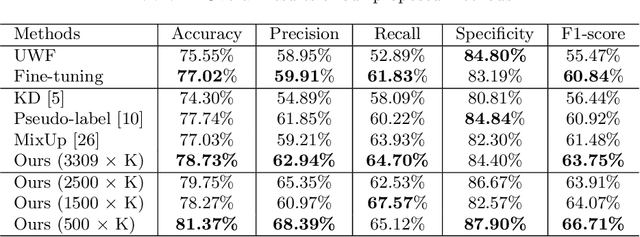Hu Zhu
Interpretable Single-View 3D Gaussian Splatting using Unsupervised Hierarchical Disentangled Representation Learning
Apr 05, 2025Abstract:Gaussian Splatting (GS) has recently marked a significant advancement in 3D reconstruction, delivering both rapid rendering and high-quality results. However, existing 3DGS methods pose challenges in understanding underlying 3D semantics, which hinders model controllability and interpretability. To address it, we propose an interpretable single-view 3DGS framework, termed 3DisGS, to discover both coarse- and fine-grained 3D semantics via hierarchical disentangled representation learning (DRL). Specifically, the model employs a dual-branch architecture, consisting of a point cloud initialization branch and a triplane-Gaussian generation branch, to achieve coarse-grained disentanglement by separating 3D geometry and visual appearance features. Subsequently, fine-grained semantic representations within each modality are further discovered through DRL-based encoder-adapters. To our knowledge, this is the first work to achieve unsupervised interpretable 3DGS. Evaluations indicate that our model achieves 3D disentanglement while preserving high-quality and rapid reconstruction.
UniScene: Unified Occupancy-centric Driving Scene Generation
Dec 06, 2024Abstract:Generating high-fidelity, controllable, and annotated training data is critical for autonomous driving. Existing methods typically generate a single data form directly from a coarse scene layout, which not only fails to output rich data forms required for diverse downstream tasks but also struggles to model the direct layout-to-data distribution. In this paper, we introduce UniScene, the first unified framework for generating three key data forms - semantic occupancy, video, and LiDAR - in driving scenes. UniScene employs a progressive generation process that decomposes the complex task of scene generation into two hierarchical steps: (a) first generating semantic occupancy from a customized scene layout as a meta scene representation rich in both semantic and geometric information, and then (b) conditioned on occupancy, generating video and LiDAR data, respectively, with two novel transfer strategies of Gaussian-based Joint Rendering and Prior-guided Sparse Modeling. This occupancy-centric approach reduces the generation burden, especially for intricate scenes, while providing detailed intermediate representations for the subsequent generation stages. Extensive experiments demonstrate that UniScene outperforms previous SOTAs in the occupancy, video, and LiDAR generation, which also indeed benefits downstream driving tasks.
Bridge the Domain Gap Between Ultra-wide-field and Traditional Fundus Images via Adversarial Domain Adaptation
Mar 24, 2020



Abstract:For decades, advances in retinal imaging technology have enabled effective diagnosis and management of retinal disease using fundus cameras. Recently, ultra-wide-field (UWF) fundus imaging by Optos camera is gradually put into use because of its broader insights on fundus for some lesions that are not typically seen in traditional fundus images. Research on traditional fundus images is an active topic but studies on UWF fundus images are few. One of the most important reasons is that UWF fundus images are hard to obtain. In this paper, for the first time, we explore domain adaptation from the traditional fundus to UWF fundus images. We propose a flexible framework to bridge the domain gap between two domains and co-train a UWF fundus diagnosis model by pseudo-labelling and adversarial learning. We design a regularisation technique to regulate the domain adaptation. Also, we apply MixUp to overcome the over-fitting issue from incorrect generated pseudo-labels. Our experimental results on either single or both domains demonstrate that the proposed method can well adapt and transfer the knowledge from traditional fundus images to UWF fundus images and improve the performance of retinal disease recognition.
 Add to Chrome
Add to Chrome Add to Firefox
Add to Firefox Add to Edge
Add to Edge